
A host of picture-taking functions to capture a decisive moment without failure

HD PENTAX-D FA150-450mmF4.5-5.6ED DC AW
Aperture: F8.0 ; Shutter speed: 1/1250 sec. ; Exposure
compensation: +0.0EV ; ISO sensitivity: 800 ; White balance: Daylight ;
Custom image: Landscape ; AF mode: Continuous[FPS-priority]
Optical viewfinder with a nearly 100% field of view
Assuring a clear view of the field and ease of focus
The K-1 Mark II's optical viewfinder provides a nearly
100-percent field of view and a 0.7-times magnification to deliver a
sharp, crisp view of the subject and a large, well-defined image field,
both of which are the benefits of the 35mm full-frame SLR camera. This
viewfinder also provides a clear view of the image field free of
aberrations, even at the edges. Its Natural-Bright-Matte III focusing
screen* makes it easy to identify the in-focus point, even during
manual-focus operation.
- * The focusing screen is fixed on the camera body, and is not interchangeable.

1Transparent LCD
Transparent viewfinder display
At-a-glance confirmation of the camera's operational status
The K-1 Mark II's transparent LCD viewfinder display allows you
to select desired data, such as a grid display, and monitor it in the
viewfinder. It comes in handy when correcting the camera's tilt using
the digital level or rearranging the image composition using a grid
pattern, without taking the eye off the subject.
Selection of data on viewfinder display
Transparent data to be displayed in the viewfinder (grid
pattern, Digital Level, AF frame and spot-metering frame) can be turned
on and off independently to accommodate varying shooting conditions and
preferred shooting styles.
Digital Level
The Digital Level displays the K-1 Mark II's horizontal and
vertical tilt with two bar scales. Compared with the conventional type
that utilizes an exposure bar scale, it not only makes it easier to
identify the camera's tilt, but also allows you to check the tilt and
exposure status simultaneously. As the result, it greatly improves the
camera's operability during viewfinder shooting.
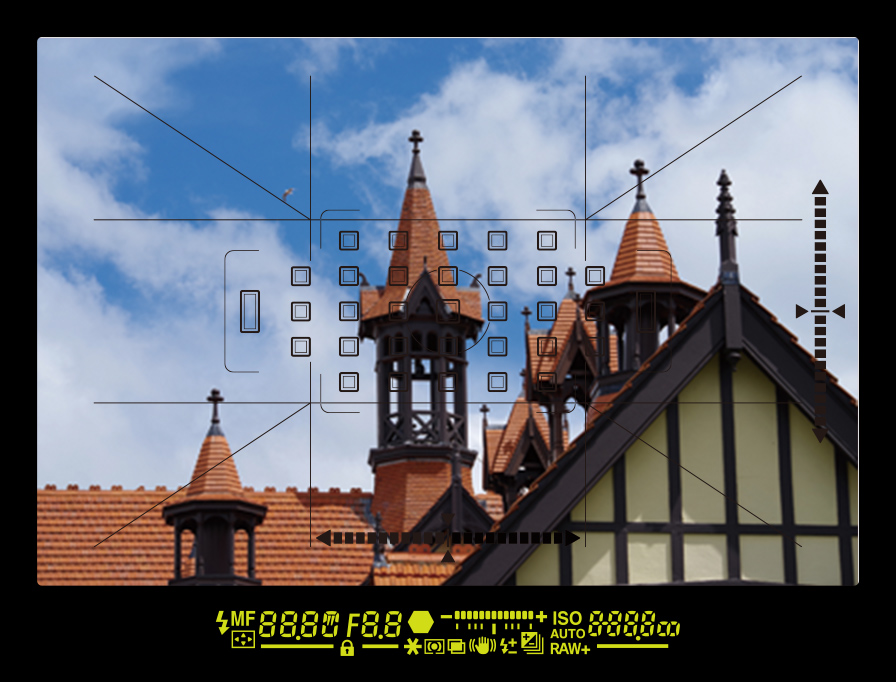
- * All viewfinder display data, except the cropping frame, is simulated to explain the function.
PENTAX Real-time Scene Analysis System
Optimizing the performance of AE and AF systems and the ease of image composition
Supported by the approximately 86,000-pixel RGB light-metering
sensor and the new PRIME IV imaging engine, the PENTAX Real-time Scene
Analysis System analyzes such factors as brightness distribution in the
image field, the subject's primary color and its motion with great
accuracy and efficiency. In addition, by adopting a breakthrough
artificial intelligence technology called deep learning to its image
detection algorithm*, this system assesses each individual scene more
accurately, while optimizing the accuracy and performance of the
light-metering, exposure-control and autofocus systems, and selecting
the most appropriate finishing touch for a given scene or composition.
- * This technology is available during
viewfinder shooting when the exposure mode is set to Scene Analyze Auto
and the Custom Image mode is set to Auto Select.
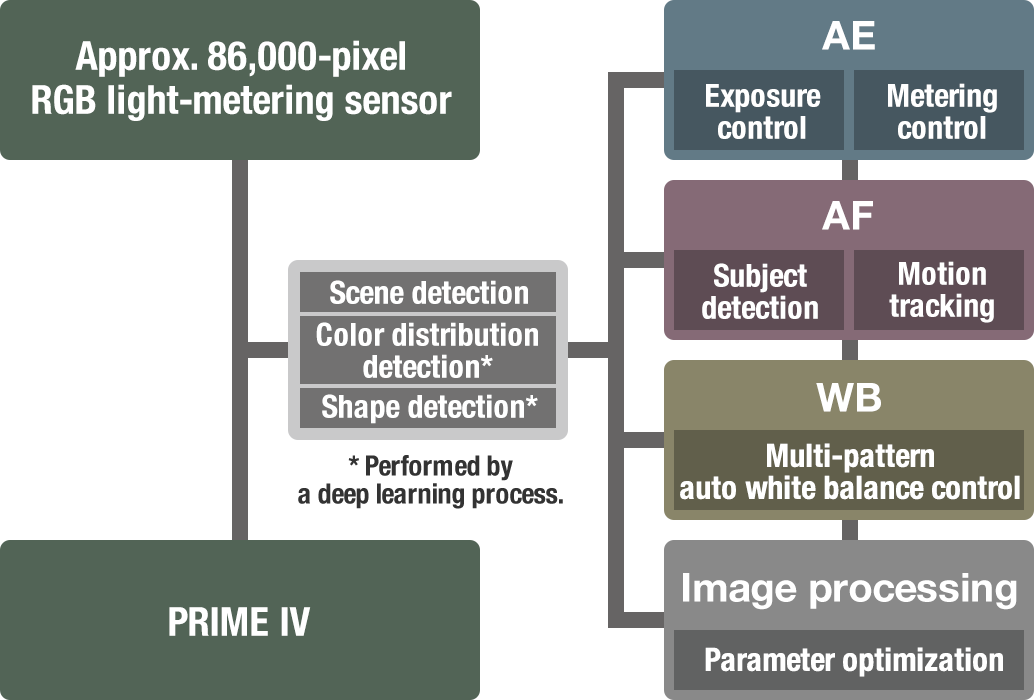
SAFOX 12
Advanced AF system, with an expanded AF detection area
In order to optimize the ease of image composition over the large
35mm full-frame image field, the PENTAX K-1 Mark II features the latest
SAFOX 12, equipped with a light source sensor, to expand the AF
detection area. To accommodate the longer optical path required for the
expanded AF area, the camera features an innovative design in which
incoming light is turned back within the AF module. Thanks to the
optimization of the condenser lens, it also provides a total of 33 AF
sensor points. This state-of-the-art module boasts both compact
dimensions and exceptional image-forming performance.
Improved AF performance (Compared to K-1)
Thanks to the incorporation of the latest AF algorithm, the
PENTAX K-1 Mark II assures high-speed autofocus operation, from the
activation of the AF system to the capture of the subject in focus. It
captures the subject's motion with great precision, even when the colors
of the subject and the background are nearly identical. It also
provides outstanding tracking performance with subjects which move
laterally or vertically within the image field. The camera's overall AF
performance has been upgraded to a new level compared with K-1.
33-point AF system with 25 cross-shaped sensors
Assuring reliable, unfailing focus on the subject
The K-1 Mark II's sophisticated 33-point AF system has a
high-density distribution of AF sensors to effectively monitor crucial
areas of the image field, while providing 25 cross-shaped sensors to
assure extra-accurate focus on the subject.
AF system with F2.8 luminance flux linear sensors
Three center sensors are designed to detect the luminance flux
of an F2.8 lens for high-precision autofocusing. When using a very fast
lens with a shallow depth of field, these sensors can greatly improve
the focusing accuracy.
Zone Select
This mode lets you select a set of nine points forming a
square, which can be shifted as desired by moving the center point. It
detects a subject placed within this square, optimizes the focus, and
tracks its movement - all automatically.

Select-area expansion
This mode lets you select one of 33 AF points to focus on the
subject, and makes the K-1 Mark II automatically track the subject and
refocus on it with the help of the neighboring points, even when it
moves away from the initial point. You can select the desired expansion
area from nine, 25 or 33 points.*

- * The number of AF points may decrease if the selected expansion area includes an area or areas outside the AF frame.
Auto tracking with PENTAX Real-time Scene Analysis System
Supported by the PENTAX Real-time Scene Analysis System, the K-1
Mark II's Auto Tracking function accurately detects the subject's
motion based on various factors including color, then keeps pinpoint
focus on the subject throughout the imaging process by automatically
shifting the in-focus point.
86,000-pixel RGB light-metering sensor
High-precision scene analysis based on the subject's color, shape and motion
The K-1 Mark II's approximately 86,000-pixel RGB light-metering
sensor not only delivers outstanding resolving power, but also detects
colors with great precision. After accurately measuring the subject's
shape, primary color and motion, it feeds the obtained data to the
PENTAX Real-time Scene Analysis System for extra-accurate scene
analysis.
Scene Analyze AUTO
Much-improved accuracy,
through the adoption of
artificial intelligence technology
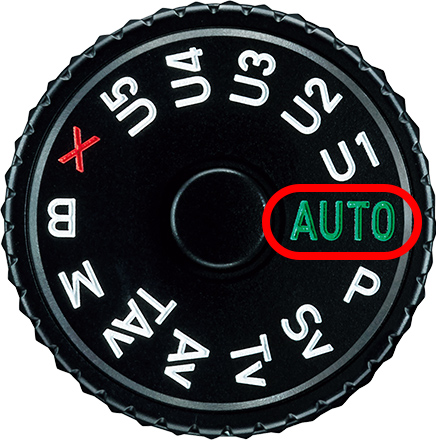
Supported by the PENTAX Real-time Scene Analysis System, the K-1
Mark II's Scene Analyze AUTO mode automatically optimizes exposure
settings, and selects the most appropriate finishing touch for your
subject. When using the optical viewfinder, it is also assisted by an
algorithm that adopts the deep learning artificial intelligence
technology, and makes an extensive analysis of a given scene based on
the enormous volume of data accumulated from previous scenes.
Multi-mode AE system
A choice of distinctive auto-exposure modes
In addition to the conventional Program (P), Aperture-Priority
(A) and Shutter-Priority (Tv) modes, the K-1 Mark II also provides the
PENTAX-original Sensitivity-Priority (Sv) and
Shutter-speed/Aperture-Priority (TAv) modes, both of which assure proper
exposure on the subject by factoring the ISO sensitivity more
prominently into exposure-control operation. This multi-mode system
assures more flexible control of exposure settings to express the
subject's motion or the depth of field. It also provides a wide exposure
compensation range of ±5EV (in still-image shooting) to expand a range
of exposure control.
Hyper Program and Hyper Manual
Flexible control of the depth of field and the subject's motion
In the Program (P) mode, the K-1 Mark II features the
PENTAX-developed Hyper Program mode, which allows you to set a desired
shutter or aperture speed using the front and rear e-dials, while
retaining a proper exposure level. This eliminates the need for turning
the model dial when switching to the Tv or Av mode.
 Front e-dial
Front e-dial Rear e-dial
Rear e-dial Green button
Green button AE-L button
AE-L button
Conceptual diagram of Hyper Program mode
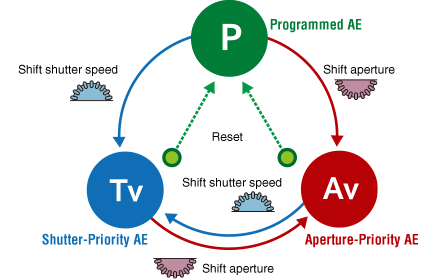
In the Hyper Manual (M) mode, one push of the green button
instantly sets the same aperture and shutter-speed settings as those of
the P mode for proper exposure. Then, you can adjust the exposure to a
desired level using the front and rear e-dials. With the AE-lock
function, you can even shift aperture and/or shutter-speed settings
while retaining the initial exposure level.
Conceptual diagram of Hyper Manual mode
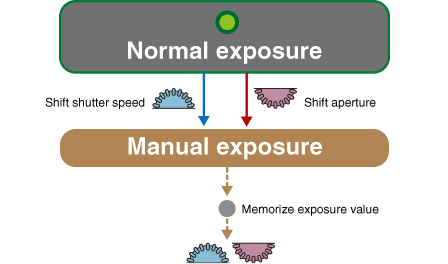
The combination of aperture and shutter speed can be changed without affecting the memorized exposure value.
When you set the Smart Function to the ISO mode, you can enjoy
more flexible control of the three primary exposure parameters -
aperture, shutter speed and ISO sensitivity - in both the P and M modes,
using a combination of the front and rear e-dials and the setting dial.
Customization
Creating your personal K-1 Mark II by customizing camera operations to your preference
The K-1 Mark II provides a wide range of customization settings
to optimize the ease and comfort of camera operations. These settings
have been designed to expand the functions of the USER Mode and the Fx
(function) buttons, improve accessibility to desired functions on the
control panel, and prevent accidental operational errors.
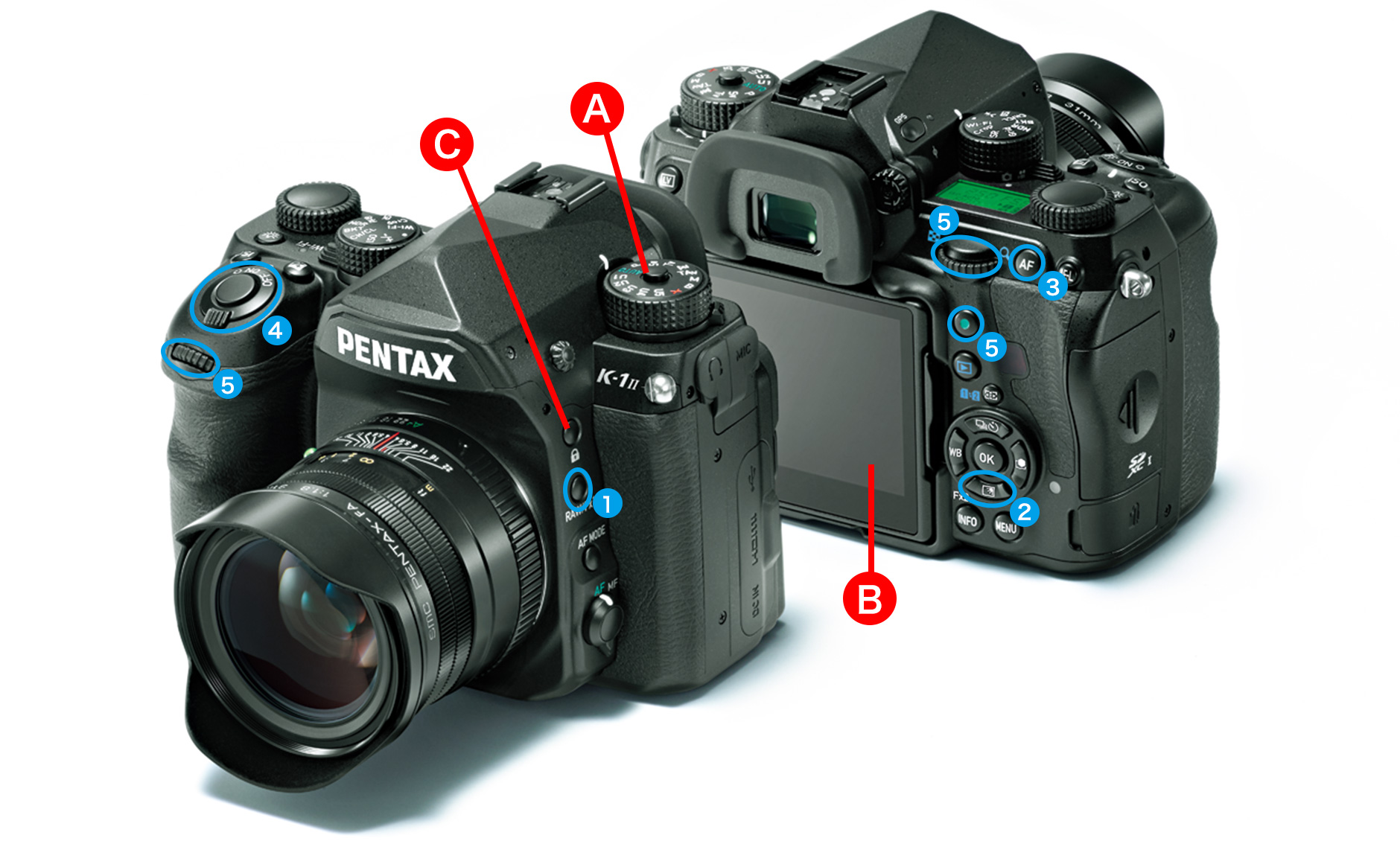
AUSER Mode
Five different combinations of the most frequently used
functions can be assigned to this mode to handle specific subjects or
creative intentions.
BControl panel
This panel displays a list of the functions and their status
on the LCD panel, while allowing you to change the contents and/or order
of listed functions to suit your shooting style.
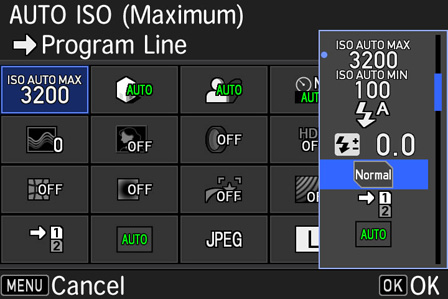
CLock button

In order to prevent accidental setting changes, the K-1 Mark
II provides a lock button to temporarily inactivate control buttons and
dials. It offers you a choice of two lock functions: Type 1 to prevent
unintended exposure setting changes; and Type 2 to prevent operational
setting changes.
| Type |
Lockable buttons and dials |
| Type1 |
 |
| Type2 |
 |
Customization buttons
-
1Fx1 button
One function from seven options can be assigned (default: RAW)
-
2Fx2 button
Another function from seven options can be assigned (default: Outdoor View Setting)
-
3AF button
One of the functions governing AF operation can be assigned.
-
4Preview lever
An optical or digital preview mode can be assigned.
-
5E-dial
A set of exposure mode can be assigned.
Custom Functions
A total of 26 Custom Functions are available with the K-1 Mark II.
1/8000-second high-speed shutter
Exceptional operational accuracy and remarkable durability
The K-1 Mark II features an electronically controlled,
vertical-run shutter to optimize the performance of the 35mm full-frame
image sensor. With a top speed of 1/8000 second, it allows you to open
up the aperture, even in bright locations, and take full advantage of
the bokeh (defocus) effect created by the large image sensor. It also
provides a flash synchroniation speed of 1/200 second. Symbolizing the
K-1 Mark II's field camera concept, this unit is designed to be compact
and lightweight, with a well-balanced combination of high-precision
operation and outstanding durability.
High-speed drive mode
Flawless continuous shooting at approximately 4.4 images per second
The K-1 Mark II provides high-speed continuous shooting at a top
speed of approximately 4.4 images per second (at CH setting). You can
also switch instantly to an optional speed setting of three images per
second (CM) or 0.7 images per second (CL) using the main menu or Smart
Function. In the APS-C Crop mode, the drive speed can be boosted to as
high as approximately 6.4 images per second to assure quick response to
fast-moving subjects.
Large image recording capacity in continuous shooting
A maximum of 100 images captured at a high-quality 36-megapixel level
Thanks to its large-capacity buffer memory, the K-1 Mark II lets
you record a large number of images during continuous shooting:
approximately 70 JPEG images (or approximately 17 RAW images) at CH
setting; approximately 100 JPEG images (or approximately 20 RAW images)
at CM setting, or approximately 100 JPEG images (or approximately 100
RAW images) at CL setting.*
- * These figures are an approximate
number of images recordable in the 35mm full-frame format, in the JPEG
L-size Best format, and at ISO 100
Compact, solid body
Remarkable maneuverability, despite a 35mm full-frame design
PENTAX's development concept has been to design a compact body
and optimize the ease of handling in the field. The PENTAX K-1 Mark II
faithfully inherits this concept. In addition to optimizing the
positioning of the finder unit to keep the camera's height to a minimum,
PENTAX has also designed an original mechanical unit containing the
shutter charge and mirror driving mechanisms. PENTAX's advanced
high-density packaging technology has succeeded in creating a compact,
maneuverable body for this new camera.

Front)PENTAX APS-C-size SLR camera (K-3 II)
Back)PENTAX 35mm full-frame SLR camera (K-1 Mark II)
Floating Mirror Structure
In order to accommodate the 35mm full-frame image sensor and
cover the light flux of the large viewfinder with a nearly 100-percent
field of view, it was necessary to increase the size of the main mirror
and mirror box. To minimize the size of the mirror box, PENTAX has
developed a new mechanism that retracts the main mirror as it swings
upwards.
- 1Lens mount
- 2Shutter window
- aAction of the main mirror
- bAction of the main mirror without the Floating Mirror Structure (the mirror bumps against the lens mount.)
- AThe main mirror and its pivot retract at mirror-up position.
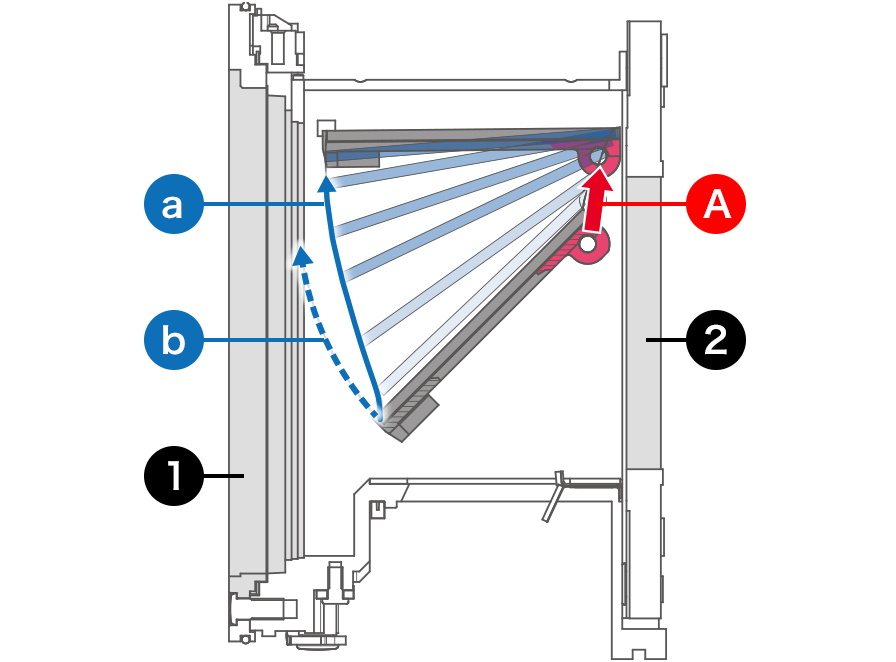
Conceptual image of the Floating Mirror Structure






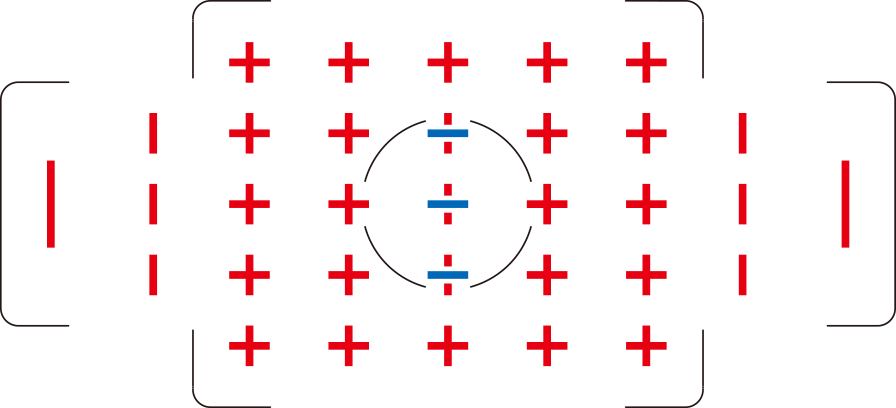
 Cross-shaped sensor
Cross-shaped sensor Linear sensor
Linear sensor F2.8 luminance flux linear sensor
F2.8 luminance flux linear sensor

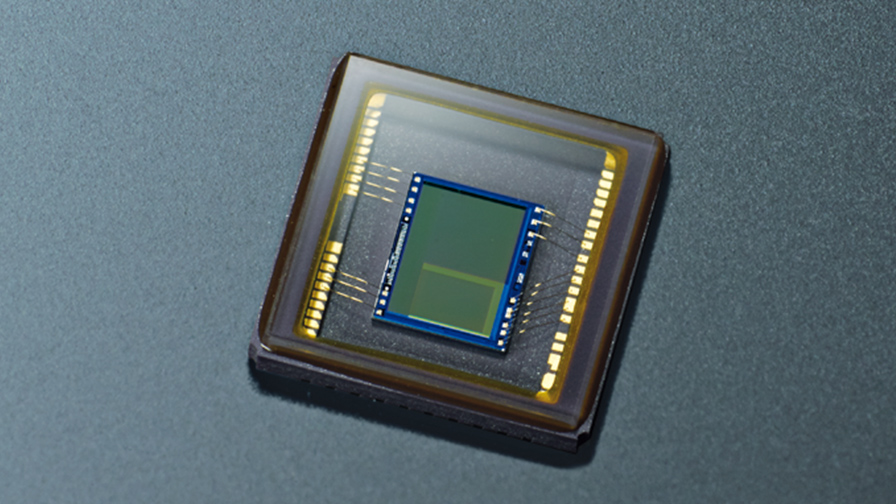

 Front e-dial
Front e-dial Rear e-dial
Rear e-dial Green button
Green button AE-L button
AE-L button





